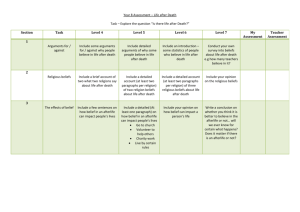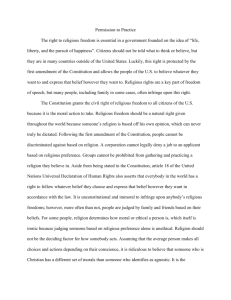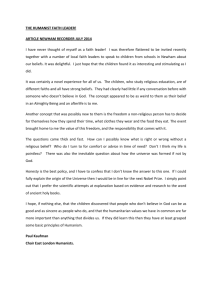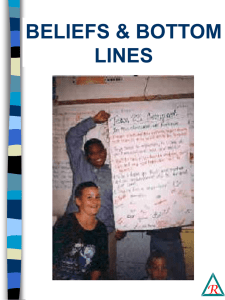The Structural Model of Cognition
advertisement
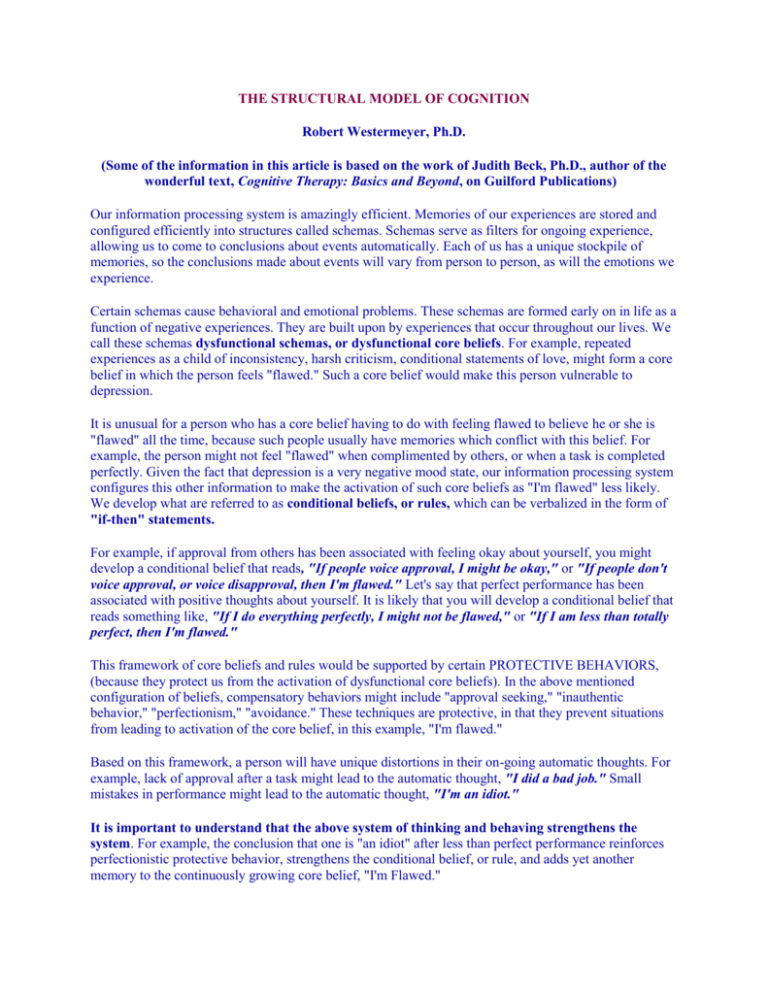
THE STRUCTURAL MODEL OF COGNITION Robert Westermeyer, Ph.D. (Some of the information in this article is based on the work of Judith Beck, Ph.D., author of the wonderful text, Cognitive Therapy: Basics and Beyond, on Guilford Publications) Our information processing system is amazingly efficient. Memories of our experiences are stored and configured efficiently into structures called schemas. Schemas serve as filters for ongoing experience, allowing us to come to conclusions about events automatically. Each of us has a unique stockpile of memories, so the conclusions made about events will vary from person to person, as will the emotions we experience. Certain schemas cause behavioral and emotional problems. These schemas are formed early on in life as a function of negative experiences. They are built upon by experiences that occur throughout our lives. We call these schemas dysfunctional schemas, or dysfunctional core beliefs. For example, repeated experiences as a child of inconsistency, harsh criticism, conditional statements of love, might form a core belief in which the person feels "flawed." Such a core belief would make this person vulnerable to depression. It is unusual for a person who has a core belief having to do with feeling flawed to believe he or she is "flawed" all the time, because such people usually have memories which conflict with this belief. For example, the person might not feel "flawed" when complimented by others, or when a task is completed perfectly. Given the fact that depression is a very negative mood state, our information processing system configures this other information to make the activation of such core beliefs as "I'm flawed" less likely. We develop what are referred to as conditional beliefs, or rules, which can be verbalized in the form of "if-then" statements. For example, if approval from others has been associated with feeling okay about yourself, you might develop a conditional belief that reads, "If people voice approval, I might be okay," or "If people don't voice approval, or voice disapproval, then I'm flawed." Let's say that perfect performance has been associated with positive thoughts about yourself. It is likely that you will develop a conditional belief that reads something like, "If I do everything perfectly, I might not be flawed," or "If I am less than totally perfect, then I'm flawed." This framework of core beliefs and rules would be supported by certain PROTECTIVE BEHAVIORS, (because they protect us from the activation of dysfunctional core beliefs). In the above mentioned configuration of beliefs, compensatory behaviors might include "approval seeking," "inauthentic behavior," "perfectionism," "avoidance." These techniques are protective, in that they prevent situations from leading to activation of the core belief, in this example, "I'm flawed." Based on this framework, a person will have unique distortions in their on-going automatic thoughts. For example, lack of approval after a task might lead to the automatic thought, "I did a bad job." Small mistakes in performance might lead to the automatic thought, "I'm an idiot." It is important to understand that the above system of thinking and behaving strengthens the system. For example, the conclusion that one is "an idiot" after less than perfect performance reinforces perfectionistic protective behavior, strengthens the conditional belief, or rule, and adds yet another memory to the continuously growing core belief, "I'm Flawed." In cognitive therapy it is believed that people can change these "dysfunctional cognitive loops." METACOGNITION is the ability to think about thinking. This uniquely human capacity enables us to interrupt such self-strengthening loops and alter biased or distorted ways of thinking and behaving. It is believed that the more effort put into changing automatic distorted thinking and protective dysfunctional behaviors, the more automatic healthy thinking will become. Cognitive therapy focuses on change at all levels; automatic thoughts, behaviors, protective rules, core beliefs. 1. AUTOMATIC THOUGHTS. Each time a distorted automatic thought goes unchecked, it strengthens dysfunctional core beliefs and conditional rules by adding yet another memory to the schema. Each time a dysfunctional automatic thought is altered via thought record disputation, you have added a "conflicting memory" to the system and actually changed the core structure. Keep in mind, automatic thoughts occur all day long, and if only one out of a hundred distorted automatic thoughts is altered, it will have a minimal effect on the core belief. So, the more the better when it comes to thought records! 2. CONDITIONAL BELIEFS (RULES). In cognitive therapy, an attempt is made to help you identify conditional rules and find more flexible healthy alternatives, then test them out via cognitive disputation and actual behavioral experiments. 3. PROTECTIVE BEHAVIORS. Exposing oneself to behaviors which counter dysfunctional protective ones is a powerful part of cognitive therapy. This sometimes requires practice in group (as is often the case with assertiveness). We recommend that individuals change protective behaviors gradually, so that it is not overwhelming. If change efforts are too overwhelming, they are likely to be abandoned. 4. CORE BELIEFS. Core beliefs are, in essence, our realities. Therefore, they are not as readily alterable as automatic thoughts (which are the products of core beliefs). Longer-term cognitive therapy will focus a great deal on core beliefs. In cognitive therapy, the following techniques are used to help you identify and begin to change core beliefs: THOUGHT MONITORING AND DISPUTING. Thought monitoring can be a good way to begin to understand core belief themes (by virtue of their frequency): As stated, altering automatic thoughts adds conflicting memories to the schema system which can alter core beliefs gradually in time. PRESCRIPTION OF HEALTHIER, MORE FLEXIBLE CORE BELIEFS. In cognitive therapy, attempts are made to help you move away from behaviors and thinking which support dysfunctional core beliefs and toward healthier more balanced ones. Clients are encouraged to review evidence which supports healthier core beliefs frequently, and to also review evidence which supports dysfunctional core beliefs, disputing exaggerated or distorted "support." EXPERIMENTING HEALTHIER CORE BELIEFS. After a healthy substitute for a dysfunctional core belief is prescribed, it is important to plan "experiments" for ourselves, in which we enter situations "as if" (a term used by Judith Beck, Ph.D.) the prescribed belief were true. These experiments can lead to outcomes that support the new belief, thus adding REAL conflicting memories to the system. REPROCESSING OF OLD MEMORIES. Cognitive therapy is not only useful in helping you dispute distortions in your every day life, but re-thinking old memories which have lead to dysfunctional core beliefs. We recommend that this "core belief work" is done in therapy, as it can be a painful experience, especially when you are not particularly versed in cognitive therapy techniques. Guidance from a professional is deemed appropriate. Figure 1. Structural Model The configuration of core beliefs, rules, protective behaviors leads to distorted automatic thoughts which strengthen the existing style of thinking and behaving at all levels. Figure 2. Example:



